6
Activewear and Lingerie
Making clothes for an active lifestyle has gotten much easier with all the wonderful four-way stretch fabrics available to the home sewer, and a few key sewing techniques. Sewing lingerie is just as easy and rewarding.
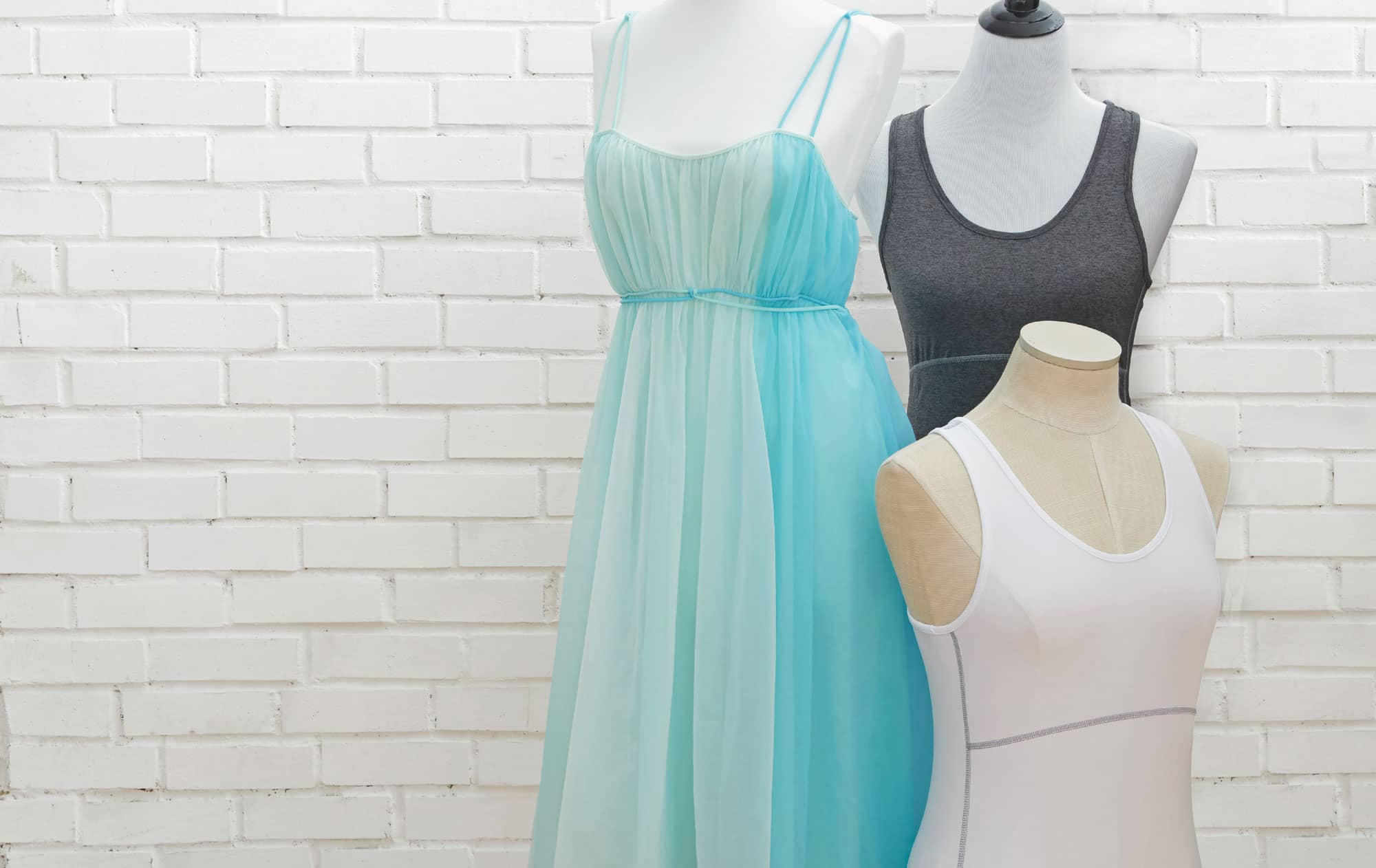
Activewear
Swimsuits, yoga pants and tops, leotards, leggings, and even tights are easy to find in the stores, but finding the right shape and size to fit is another issue. Making your own can be fun and fast, especially when you use the right materials and techniques.
Fabrics
Activewear fabrics are characterized by their super stretch and recovery properties thanks to the addition of spandex. Many of them are moisture wicking. There is a tremendous range of these fabrics, most made from synthetic fibers such as polyester and nylon, with some percentage of spandex fibers to ensure the four-way stretch. Consider using waffle textured knits, specialty knits called SeaCell, which are made from seaweed cellulose and are cool to the touch, various sheer weights of power mesh, and any of the fabulous activewear fabrics in exciting colors, patterns, and textures.

Some activewear garments, particularly swimwear, should be lined for modesty and comfort. The most common swimsuit lining is made of nylon, but you will find polyester/cotton/nylon blends, too. Most are a nude color and are generally sold alongside the swimsuit fabrics.

Layout and Cutting

Place the pattern pieces on the fabric so the most stretch going around your body. Use sharp pins and pin within the seam allowances because these fabrics snag easily. You can cut with scissors, but using a rotary cutter keeps the cut line smooth and accurate.
Sewing Tips
While sewing these four-way stretch fabrics can be tricky, there are several things you can do to make the process easier.
• Just as when sewing on any other knit fabric, use polyester thread or wooly nylon thread for a softer feel. Experiment with both needle and thread choices. You can try universal, ballpoint, or stretch needles. If skipped stitches are a problem, change the thread brand and the type and size of the needle until you find the right combination for smooth and even stitches.
• While these super stretch fabrics can be sewn on a sewing machine, they are best sewn on a serger to keep the seams as flat as possible so the seam allowances don’t rub against your skin as you work out. A four-thread serged seam (A) is the best stitch choice for swimsuit weight fabric and it holds up well over time and use.
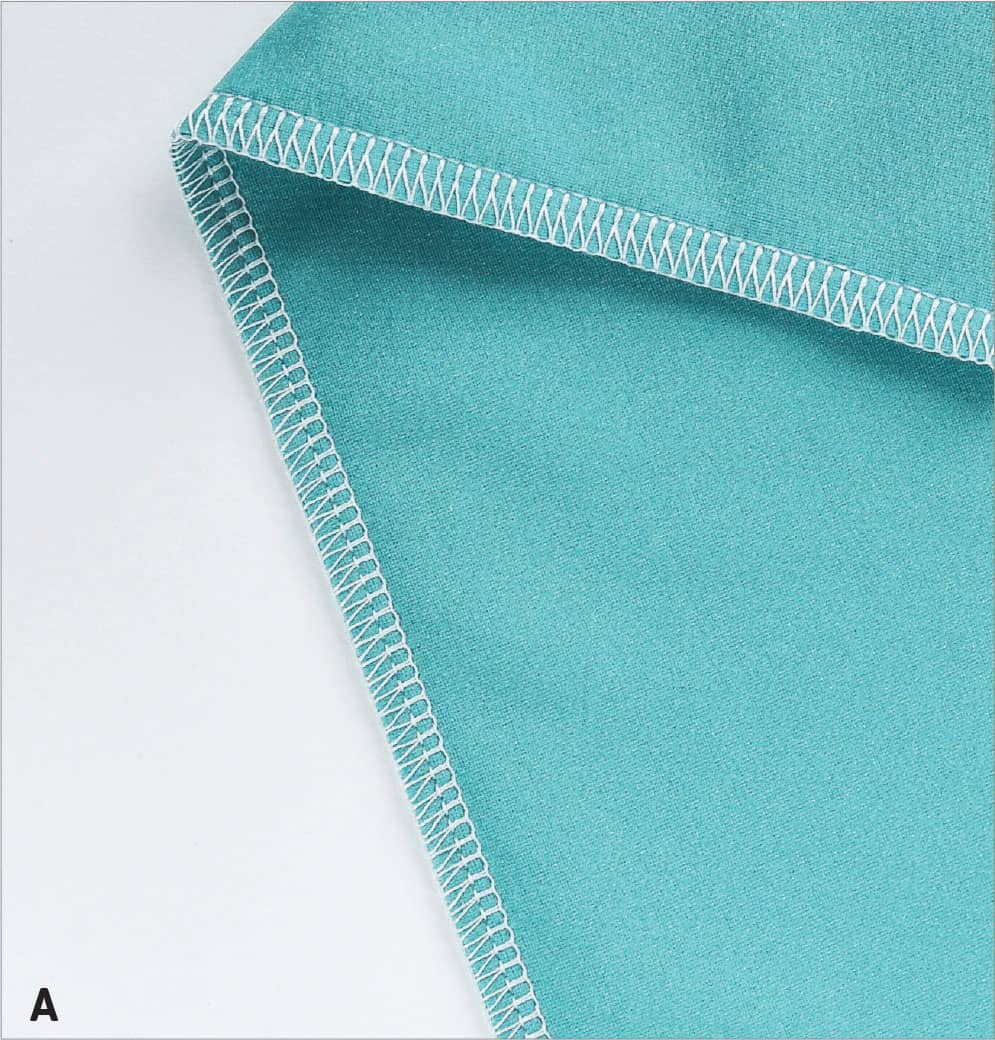
• The flatlocked serged seam (B) is the flattest seam. It is a good choice for scuba-weight fabric. Refer to shown here for complete instructions.
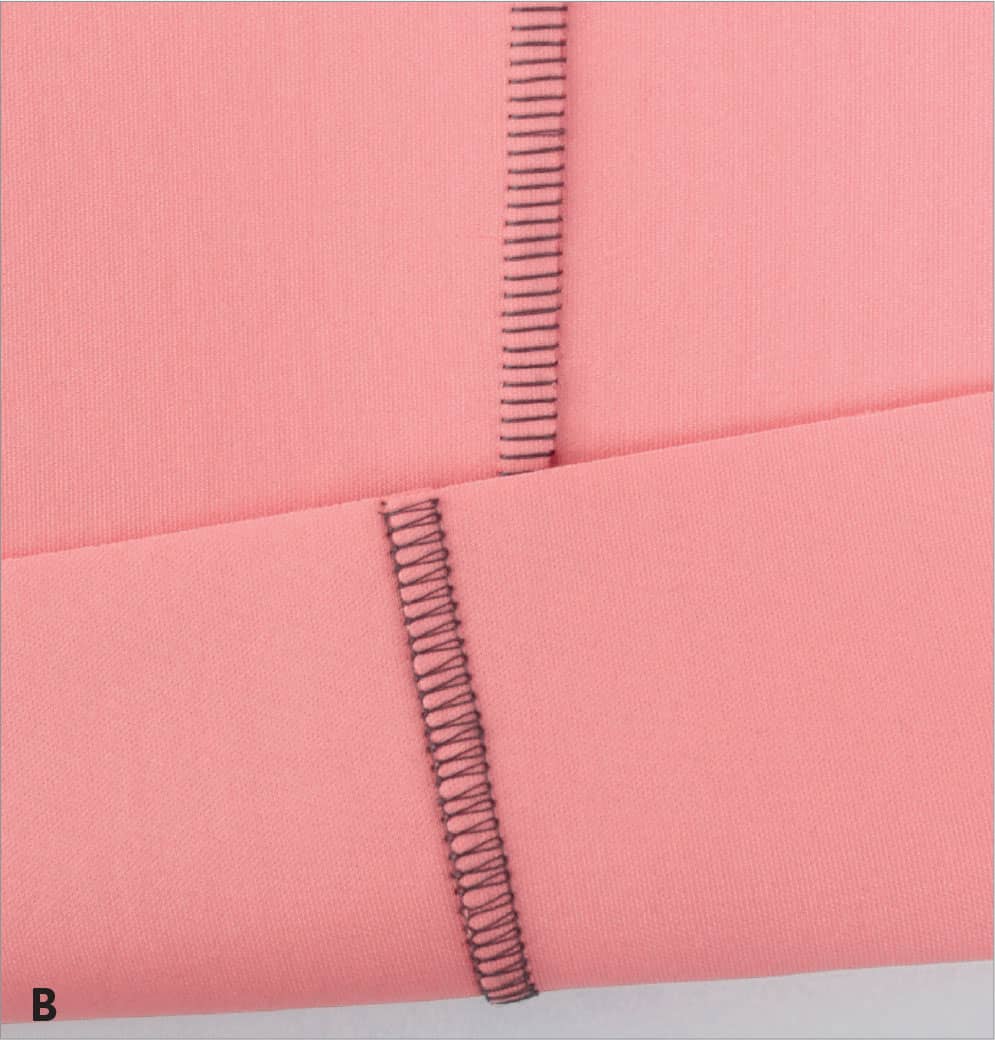
• To sew seams on a sewing machine, set the machine to a narrow zigzag stitch with a stitch width of .5 and stitch length of 2.5. Trim the seam allowance to 1/4" (6 mm) wide (C) and then finger-press the seam allowance to one side. Topstitch on the right side with a 4 mm (.16 inch)-wide zigzag stitch through all layers (D). Make sure the zigzag stitch covers the raw edges on the inside of the garment.


• Rather than sewing a standard seam, overlap the raw edges and zigzag stitch (E).
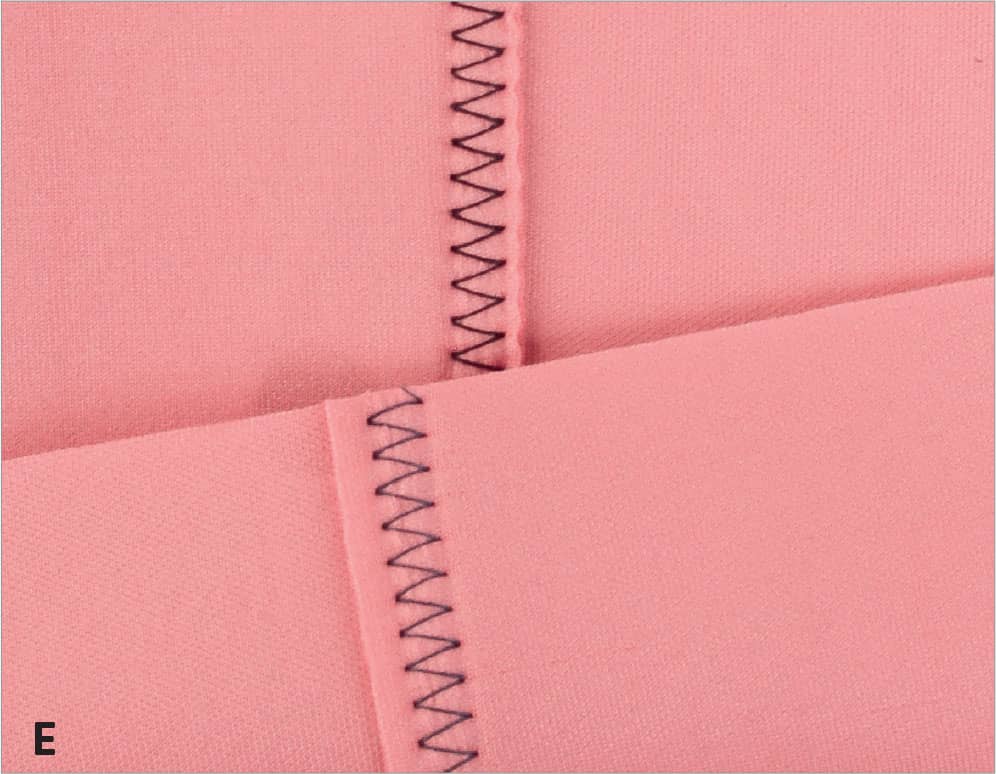
• The most important hem feature on activewear garments is adequate stretch without popped stitches. Coverstitch and twin-needles hems are the best choices because they are simple and flat. A large zigzag stitch works well on heavier fabrics (F).
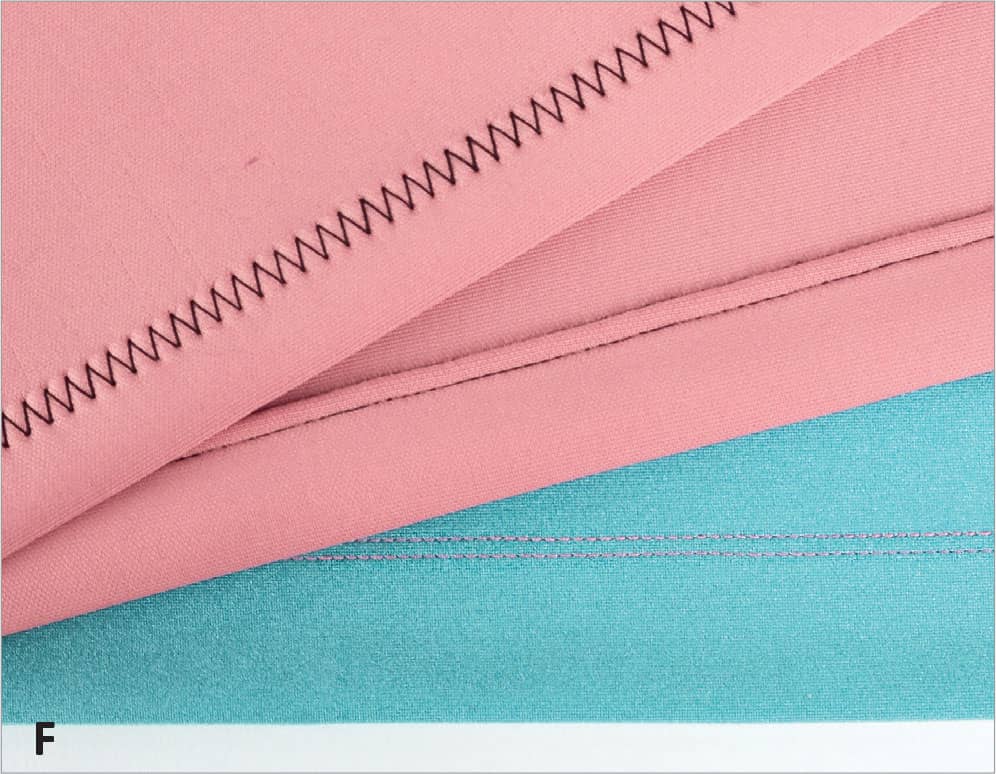
Elastic Finishes
The best elastic to use for activewear and especially swimwear is an elastic that has neoprene (a synthetic rubber) in it so that it is resistant to salt and chlorine. These elastics are available in white, black, and natural. Clear elastic is another option.
Your pattern may include a guide for how long to cut the elastic. If not, refer to shown here for how to calculate length using the 7/8 ratio.
For necklines: Overlap the ends of the elastic and sew them together. Divide the neckline and the elastic into fourths and match these points when sewing the elastic to the fabric. See here for instructions.
For leg openings: Apply the elastic in a 1 to 1 ratio in the front of the leg and stretch it to fit the back leg, so the garment cups more below the derriere.
1. Cut the seam allowance to the exact width of the elastic you are using. Pin the elastic to the wrong side of the fabric, aligning the edge of the elastic to the raw edge of the fabric. Use a wide zigzag or a four-thread serger stitch to attach it to the edge (A).
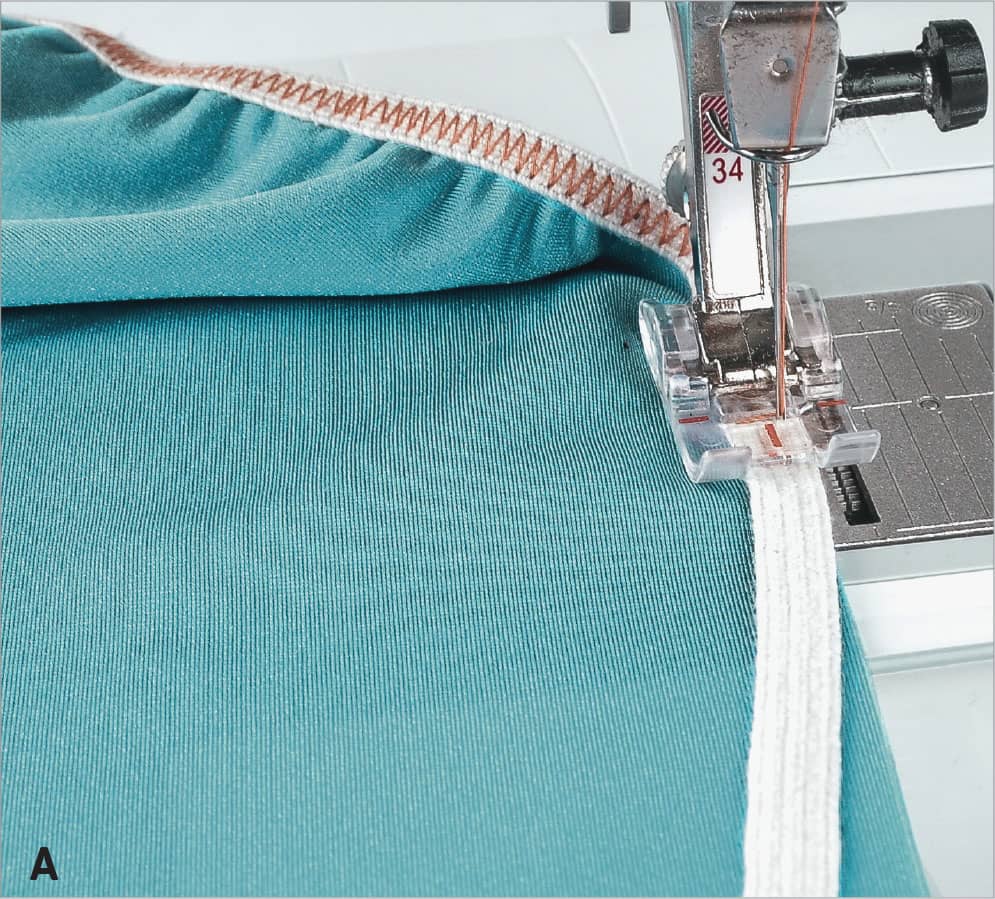
2. Turn the width of the elastic to the wrong side of the garment and topstitch it in place, using a twin needle or coverstitch for maximum stretch (B).
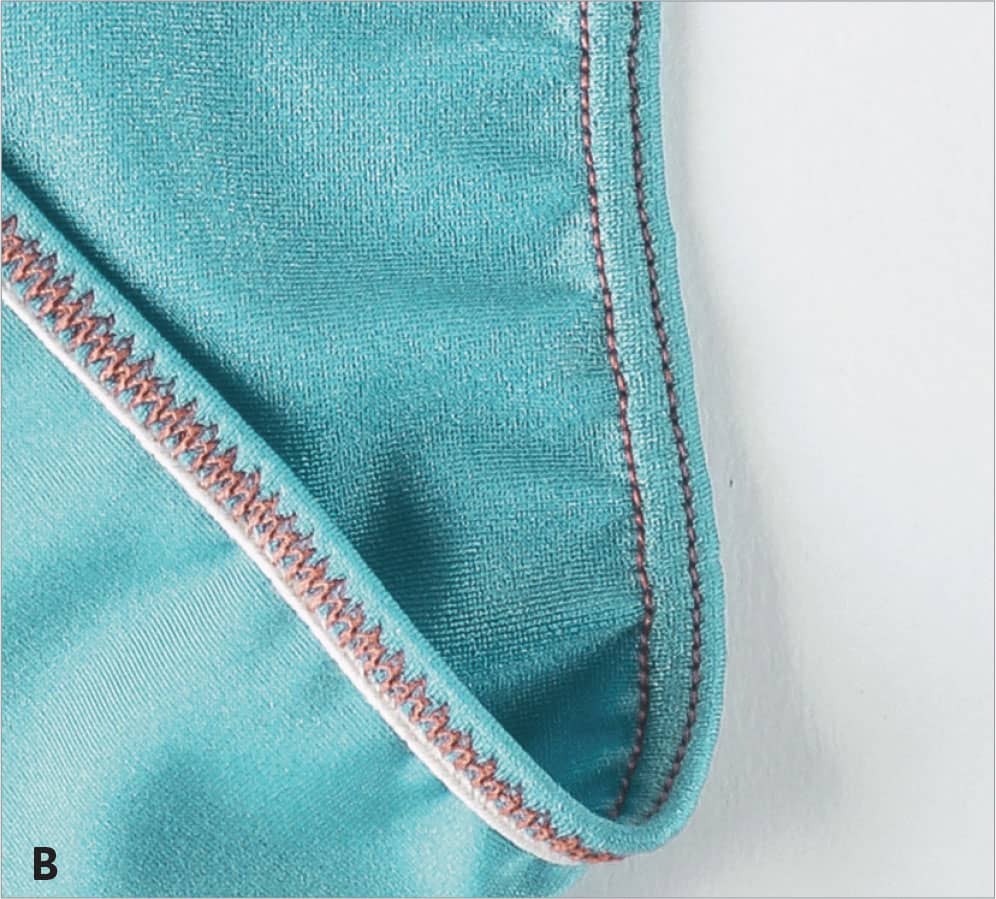
For waistlines: see here.
Lingerie
Beautiful woven fabrics such as silk charmeuse and crepe de chine are commonly used for sewing slips, panties, and camisoles, but knitted fabrics such as tricot, power mesh, stretch lace, and other open weave fabrics are just as popular.

Types of Lingerie Elastics
The most uniquely different aspect of sewing lingerie fabrics is the selection and application of elastics. The overall appearance of lingerie is enhanced with the addition of elastics, as both utilitarian and decorative trims.
Decorative edge elastics feature a scalloped edge or a picot edge that is visible beyond the finished fabric edge. Stretch lace elastic, with or without seam allowances, can be applied on top of the fabric, nestled in a seam, or as a peek-a-boo insertion anywhere within the garment. All these elastics are available in many colors.
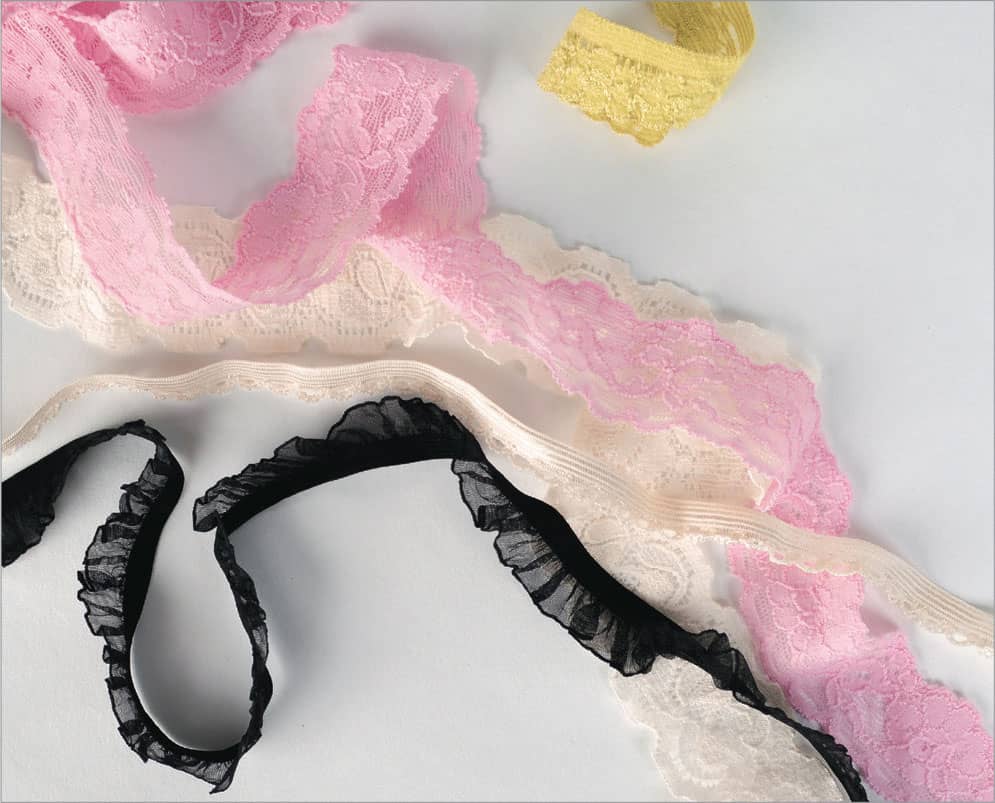
Applying Decorative-Edge Elastic
1. So the decorative edge shows, pin the elastic on top of the right side of the garment, aligning the straight edge of the elastic with the raw edge of the fabric. Use a narrow zigzag stitch to stitch near the decorative edge (A).
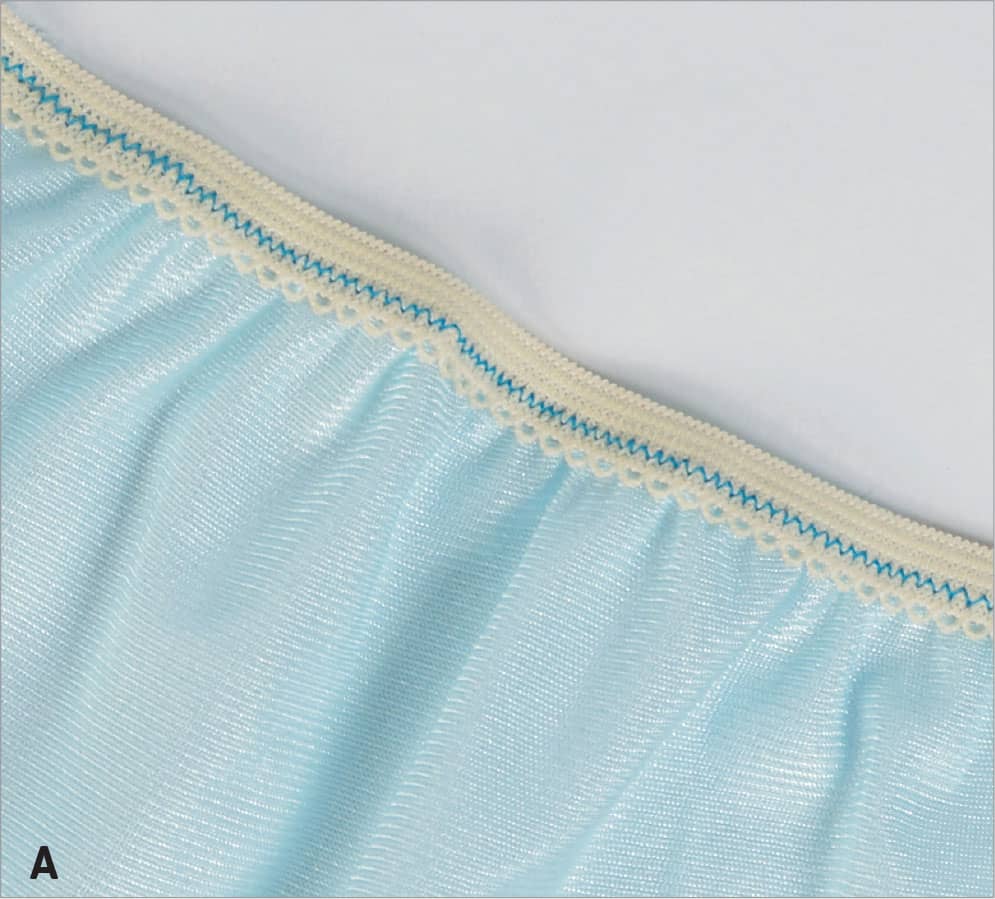
2. To finish, fold the elastic to the wrong side and use a stretch zigzag stitch close to the straight edge of the elastic (B).
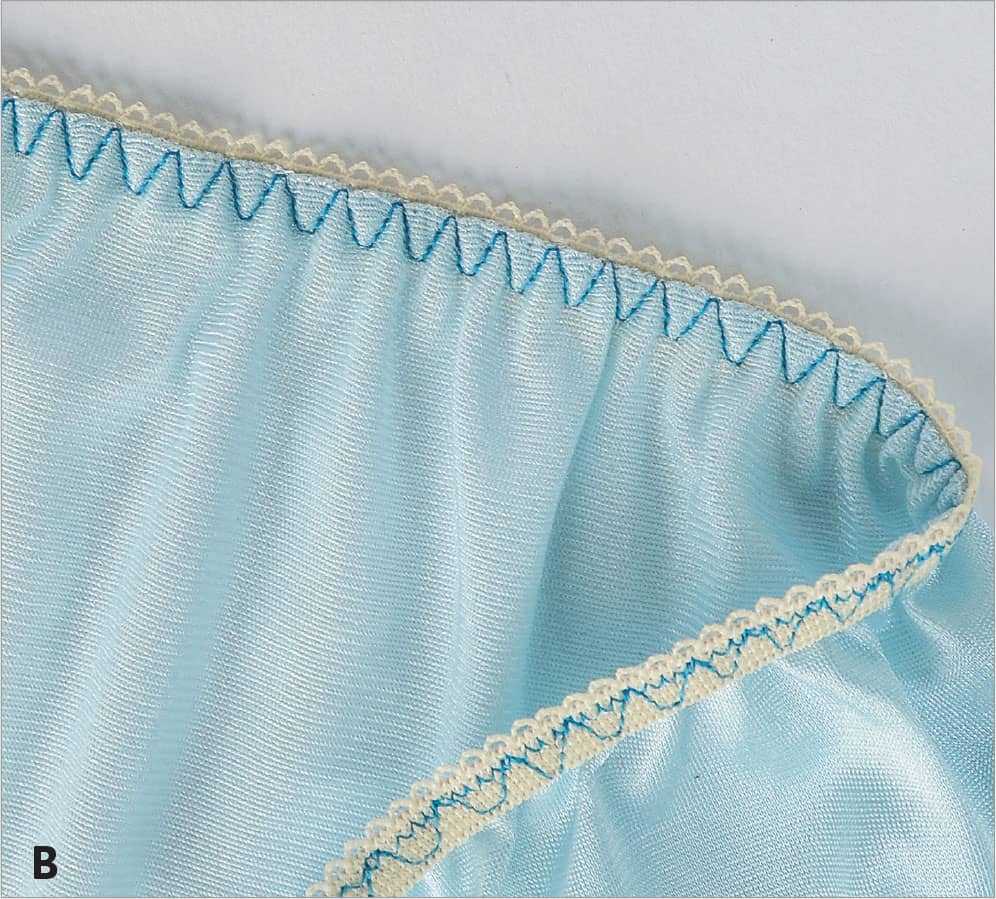
Applying Stretch Lace
Stretch lace with a seam allowance is applied in the same manner as decorative-edge elastic by simply allowing the amount of lace you want to be exposed (A).
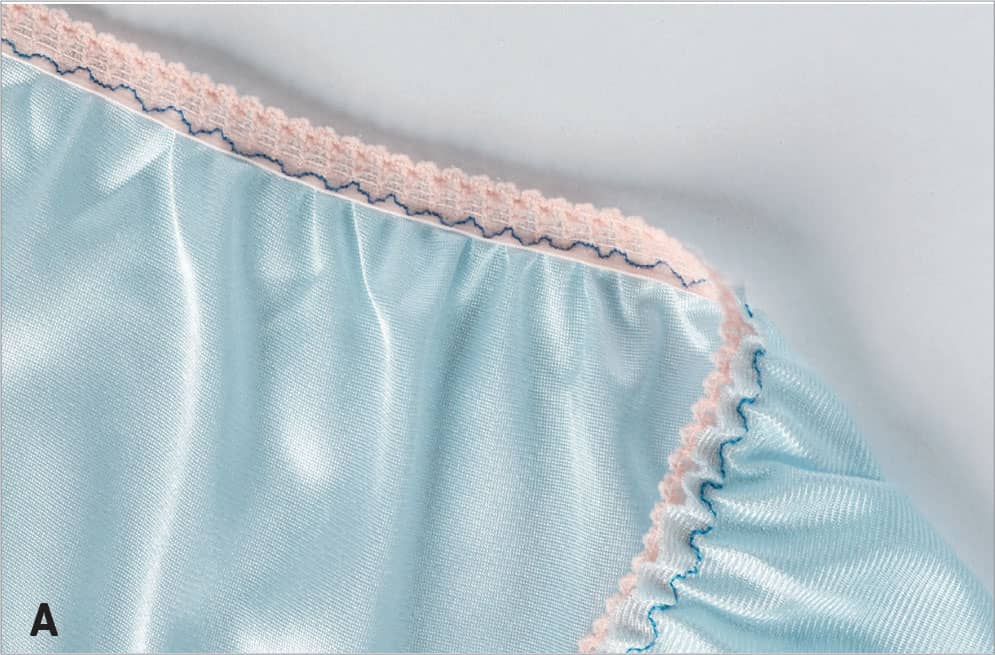
To apply stretch lace with two decorative edges to the raw edges of the fabric, pin the wrong side of the lace to the right side of the fabric so that the outer edge of the lace is even with the raw edge of the garment. Use a medium zigzag stitch to sew along the inner edge of the lace. Use small scissors to trim the fabric under the lace away close to the zigzag stitches (B).

To create a peek-a-boo lace trim effect, place the wrong side of the lace on the right side of the fabric. This can be done anywhere in the garment, it doesn’t need to applied to a garment edge. Zigzag stitch both edges of the lace to the fabric. Use small scissors to trim away the fabric between the two rows of stitches, behind the lace (C).
